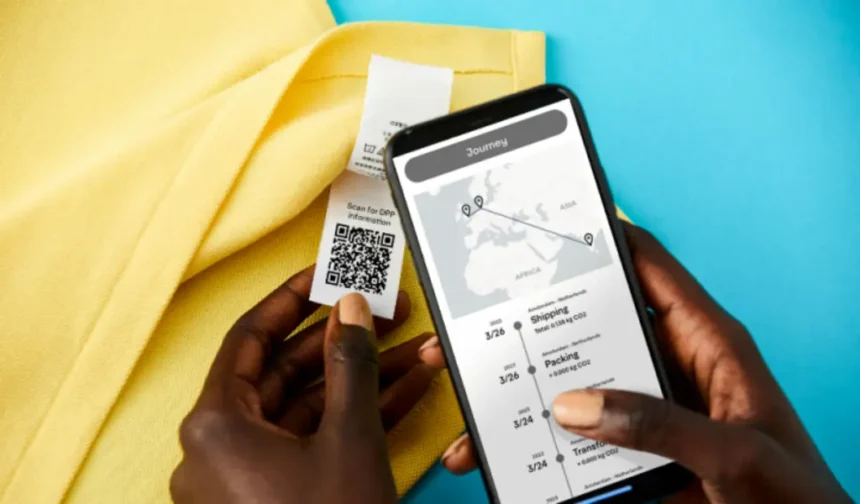By 2030, the EU will require a Digital Product Passport for all textiles. Learn how this regulation will reshape transparency, sustainability, and global trade.
Digital Product Passport: The EU’s New Era of Product Transparency
By 2030, every textile product sold in the European Union will be accompanied by a Digital Product Passport (DPP) — a digital record set to transform how products are traced, recycled, and marketed.
Whether in the form of a QR code, NFC chip, or another digital tag, the DPP will store verified information on a product’s origin, material composition, supply chain journey, sustainability profile, and recycling instructions.
This data, gathered from trusted, federated sources, will enable regulators, brands, and consumers to make more informed and environmentally responsible decisions.
SEE ALSO: 5 Key Factors for Digital Marketing Success with a Social Media Marketing
Why the EU Is Introducing Digital Product Passports
The Digital Product Passport is a central component of the EU Strategy for Sustainable and Circular Textiles, designed to address the 12.6 million metric tons of textile waste generated annually in Europe.
By enabling full product traceability, the European Commission aims to push brands toward circular economy models that promote recycling, reuse, and ethical sourcing.
This initiative is part of the broader Ecodesign for Sustainable Products Regulation (ESPR) — legislation that standardizes how environmental and production data should be collected, stored, and shared across industries.
that standardizes how environmental and production data should be collected, stored, and shared across industries.
How a Digital Product Passport Works
Imagine a luxury jacket with a discreet QR code stitched into its lining. By scanning it, a customer could instantly see:
- Where the fabric was sourced
- The factory and the country where it was manufactured
- Its carbon footprint
- Instructions for care, repair, and recycling
This on-demand transparency not only ensures compliance with EU law but also strengthens brand credibility and consumer trust.
The Legal Framework Behind the DPP
The Digital Product Passport is part of a multi-layered legislative process:
- EU Green Deal – Sets broad climate and sustainability goals, including a target to reduce emissions by 55% by 2050.
- Ecodesign for Sustainable Products Regulation (ESPR) – Establishes the framework for sustainable product design and traceability.
- Delegated Acts – Provide specific, industry-focused rules for implementation, including those for textiles, which define how DPPs must be applied, verified, and updated.
Global Impact Beyond Europe
Although it is an EU regulation, the Digital Product Passport will affect businesses worldwide. A clothing brand in Asia or a tech manufacturer in North America will still need to comply if their products are sold within the EU.
In time, the DPP could evolve into a global benchmark for product transparency, influencing supply chains and sustainability standards far beyond Europe’s borders.
Challenges for Businesses
While large corporations may have the resources to adapt, small and medium-sized enterprises (SMEs) face significant hurdles:
- Implementation costs – Setting up digital systems, managing secure data storage, and ensuring compliance
- Data privacy concerns – Balancing transparency with the protection of trade secrets
- System integration – Ensuring new processes work smoothly with existing supply chain management tools
Opportunities for Forward-Thinking Brands
The Digital Product Passport represents more than a compliance requirement — it is a strategic opportunity:
- Strengthens consumer trust by providing verifiable sustainability data
- Differentiates brands in eco-conscious markets
- Enhances marketing potential by integrating environmental data into product pages and digital campaigns
In an era where sustainability drives consumer preference, adopting the DPP early could provide a significant competitive edge.
FAQs on the Digital Product Passport
1. What is the deadline for implementing the Digital Product Passport?
The EU requires DPPs for all textiles sold within the bloc by 2030, with phased implementation for other industries.
2. Which products will require a DPP?
Initially, textiles, but future categories may include electronics, batteries, and furniture.
3. How will consumers access the DPP?
Through QR codes, NFC chips, or similar digital tags attached to each product.
4. Do non-EU companies need to comply?
Yes. Any product sold in the EU, regardless of origin, must meet DPP requirements.
5. What benefits do brands gain from adopting the DPP?
Beyond legal compliance, brands can boost trust, improve sustainability reporting, and strengthen their position in environmentally conscious markets.















